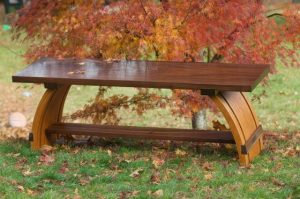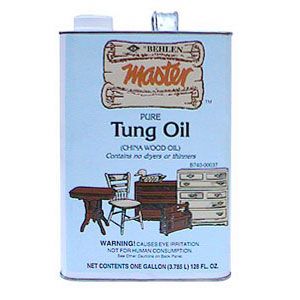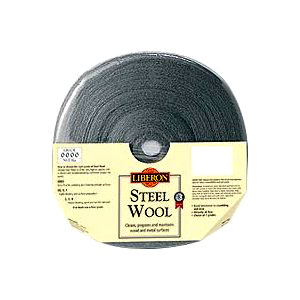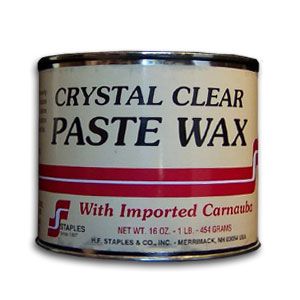
Recently I’ve been finishing a bench for a client. And I mean that literally: applying finish. The finishing process can be quite confusing but I find it enjoyable – watching the piece become what I had always had in my minds eye. During this process, I use quite a few shop supplies. So for this years Wish List, I’m going to focus on how to re-up my finishing supplies. This is a great list to help any woodworker with that final step which really effects the outcome.
 First of course is sandpaper. I use all kinds, but often just need plain old sheets of various grits. I use these as I’m building for smoothing, shaping and cleaning up. So, let’s grab a couple of these packs of assorted grits.
First of course is sandpaper. I use all kinds, but often just need plain old sheets of various grits. I use these as I’m building for smoothing, shaping and cleaning up. So, let’s grab a couple of these packs of assorted grits.
Once the build is complete, it’s time to go over it all with finer grits. I’ll use 220 and 320 on all the flat and curved surfaces. I can use quite a bit of paper, depending on the size of the project, so I’ll go with packs of just those two grits (5 or 20 sheets).
At this time, I’ll also break all the edges. I like crisp, beveled edges instead of rounding over. So I use a block plane on all my 90 degree intersections. And once I’ve got those bevels, I’ll go back over with 320 grit lightly. I use either my Hock Tools Block Plane or this Lie-Nielsen Block Plane. (But you don’t actually need both, right?)
Now it’s time to apply some finish. Almost. First, let’s make sure that the wood is clean from all that dust. I use my Festool Dust Collector to first suck up all the dust. Then I’ll go over it with some tack cloths for a final wiping. Or try one of these new Norton Red Dry Tack Cloth. You can also use some mineral spirits on a rag to wipe up the dust.
 Now (finally!) to the finish. My favorite is an oil/varnish blend. I’ll start with 50/50 oil/thinner (turpentine or mineral spirits) to the bare wood. Then each successive coat, I’ll add in some varnish and reduce the thinner. So by coat 5-6 the blend might be about 30/50/20 oil/varnish/thinner. For the oil, I prefer tung oil but it takes a long time to dry, so I’ll substitute boiled linseed oil for projects that have a timeline. I’ve been using Epifanes Varnish for years – but this one from Highland is probably just as good. I like spar varnish for a longer-lasting finish that holds up really well. And of course, grab some thinner. You might want to be careful of the cheapest thinner at the big box stores – look for something a little pricier that will give you better results. You don’t need much.
Now (finally!) to the finish. My favorite is an oil/varnish blend. I’ll start with 50/50 oil/thinner (turpentine or mineral spirits) to the bare wood. Then each successive coat, I’ll add in some varnish and reduce the thinner. So by coat 5-6 the blend might be about 30/50/20 oil/varnish/thinner. For the oil, I prefer tung oil but it takes a long time to dry, so I’ll substitute boiled linseed oil for projects that have a timeline. I’ve been using Epifanes Varnish for years – but this one from Highland is probably just as good. I like spar varnish for a longer-lasting finish that holds up really well. And of course, grab some thinner. You might want to be careful of the cheapest thinner at the big box stores – look for something a little pricier that will give you better results. You don’t need much.
 How to apply the finish? I’ll wipe on with rags, which get used up quickly so grab a couple of few of these packs from Highland. I’ll also use foam brushes for coats of finish – it doesn’t have to be fancy. Again, they get used quickly so grab a bunch. Between coats of finish I’ll use some wet/dry sandpaper (400-600 grit) and/or some steel wool to knock back the finish and smooth it out.
How to apply the finish? I’ll wipe on with rags, which get used up quickly so grab a couple of few of these packs from Highland. I’ll also use foam brushes for coats of finish – it doesn’t have to be fancy. Again, they get used quickly so grab a bunch. Between coats of finish I’ll use some wet/dry sandpaper (400-600 grit) and/or some steel wool to knock back the finish and smooth it out.
 After the last coat of finish is all dry, it’s time for a final rubbing out and smoothing. For this I’ll turn again to the steel wool and use some wool lube to create a satin finish. The wool lube helps the steel wool create smaller scratches and hence a more polished finish. After all that, a coat of wax on top! I like this paste wax (or use the dark version for darker woods) or I’ll use Renaissance Wax.
After the last coat of finish is all dry, it’s time for a final rubbing out and smoothing. For this I’ll turn again to the steel wool and use some wool lube to create a satin finish. The wool lube helps the steel wool create smaller scratches and hence a more polished finish. After all that, a coat of wax on top! I like this paste wax (or use the dark version for darker woods) or I’ll use Renaissance Wax.
While not as sexy as a set of new chisels, I find that I use up finishing supplies pretty quickly and they are critical for me to create stunning furniture.

